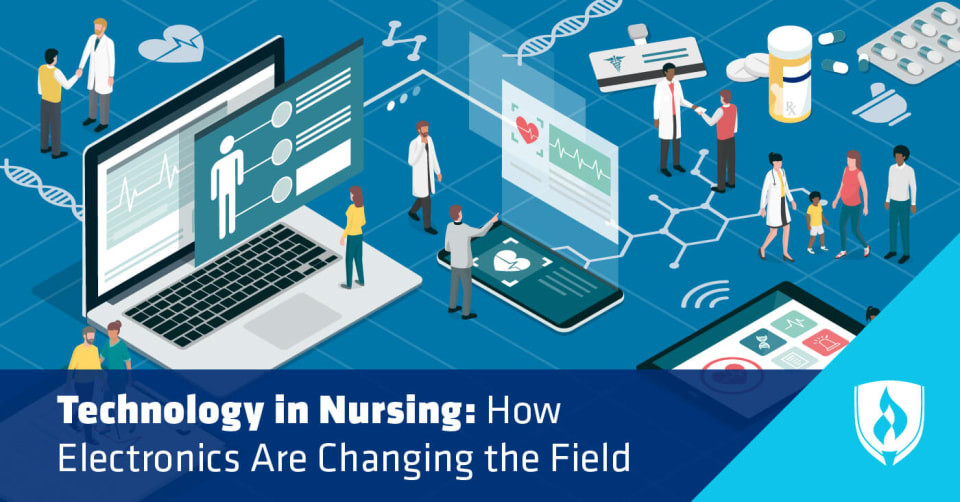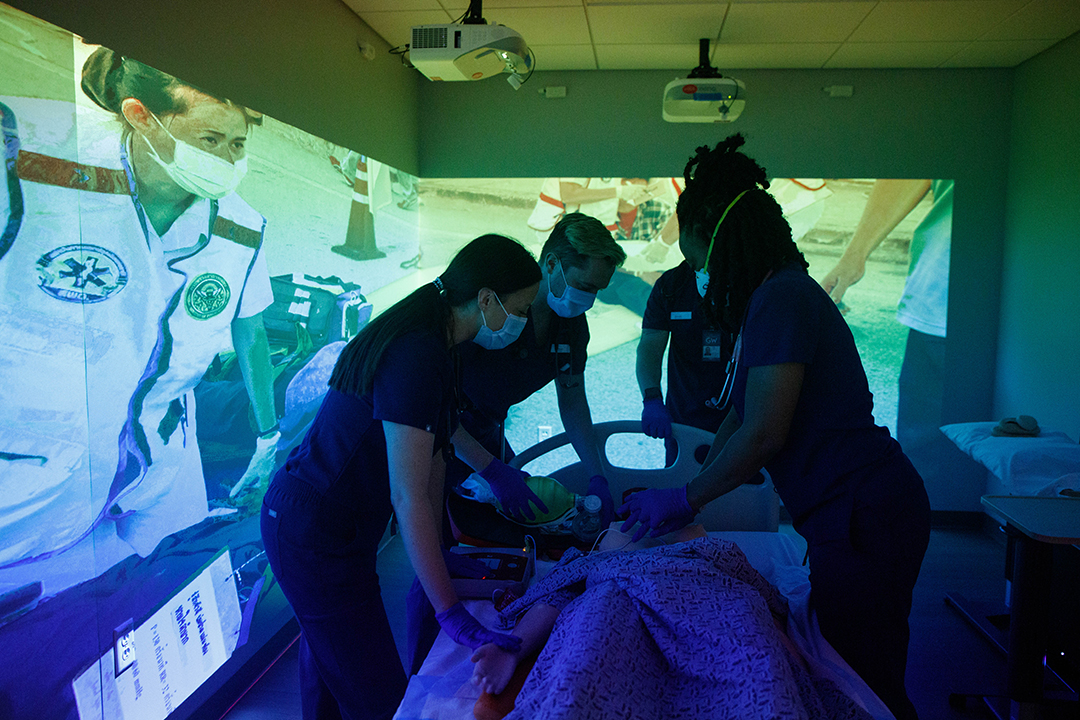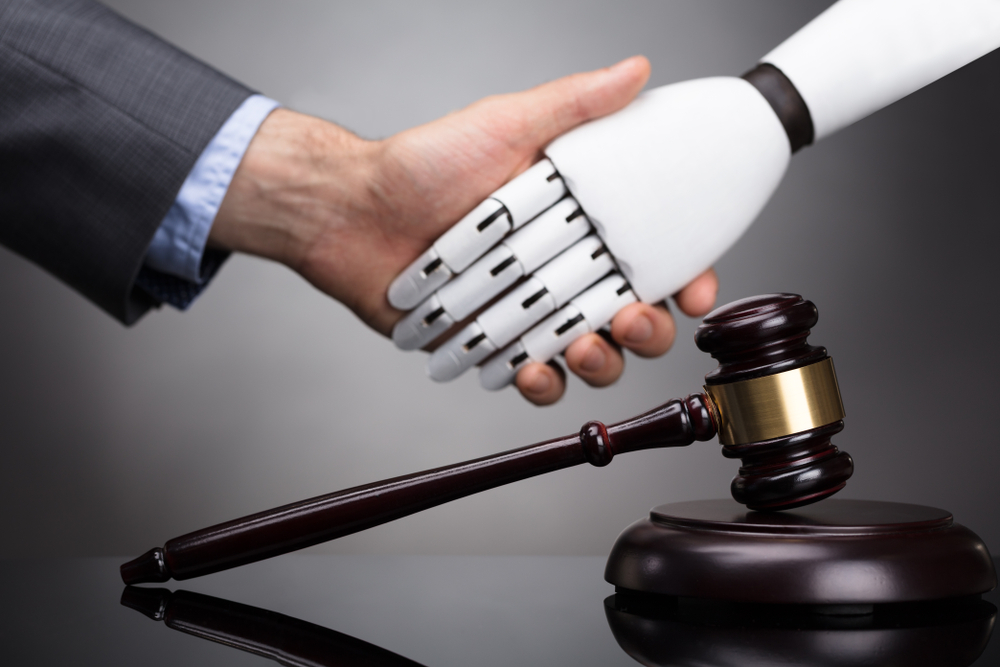Technology in Nursing Education: Transforming Healthcare
Technology in nursing education is no longer a futuristic concept but a transformative force shaping the future of healthcare. From online learning platforms to virtual reality simulations, technology is revolutionizing […]

Technology in nursing education is no longer a futuristic concept but a transformative force shaping the future of healthcare. From online learning platforms to virtual reality simulations, technology is revolutionizing how nurses are trained and equipped to provide exceptional patient care.
This dynamic integration offers a wealth of opportunities, enabling students to access flexible learning environments, engage in interactive simulations, and gain hands-on experience in a safe and controlled setting. It’s a testament to the power of technology to enhance learning outcomes and prepare nurses for the ever-evolving demands of the healthcare landscape.
Technology and the Future of Nursing Education

Technology is rapidly transforming healthcare, and nursing education must adapt to prepare future nurses for this evolving landscape. The integration of cutting-edge technologies is not just about keeping pace with change; it’s about creating a more effective, engaging, and accessible learning environment for aspiring nurses.
Emerging Trends in Technology
The future of nursing education is being shaped by a variety of emerging trends in technology. These trends are creating new opportunities for nurses to learn, practice, and deliver care.
- Virtual Reality (VR) and Augmented Reality (AR): VR and AR are creating immersive learning experiences that allow students to practice clinical skills in simulated environments. These technologies can recreate complex medical scenarios, providing students with realistic training opportunities that were previously unavailable. For example, VR simulations can help students practice performing a central line insertion, while AR can overlay digital information onto a real-world environment, such as providing real-time feedback during a patient assessment.
- Artificial Intelligence (AI) and Machine Learning (ML): AI and ML are transforming the way nurses work by automating tasks, analyzing data, and providing insights that can improve patient care. In nursing education, these technologies can be used to personalize learning experiences, provide intelligent tutoring, and even assist with the development of new nursing curricula.
- Gamification: Gamification involves using game mechanics and design principles to make learning more engaging and interactive. By incorporating elements of competition, rewards, and progress tracking, gamification can motivate students and enhance their learning outcomes.
- Wearable Technology: Wearable devices are becoming increasingly common in healthcare, providing real-time data on patient health and activity levels. In nursing education, wearable technology can be used to monitor students’ physiological responses during simulations, providing valuable insights into their stress levels and decision-making processes.
Impact of AI and Machine Learning
AI and ML have the potential to revolutionize nursing education. Here are some of the ways these technologies are expected to impact the field:
- Personalized Learning: AI-powered platforms can analyze student data, including their learning styles, strengths, and weaknesses, to create personalized learning paths. This can help students learn at their own pace and focus on areas where they need the most support.
- Intelligent Tutoring Systems: AI-powered tutoring systems can provide students with personalized feedback and guidance, helping them to master complex concepts and skills. These systems can adapt to each student’s individual needs, providing support when they struggle and challenging them when they are ready for more advanced material.
- Automated Assessment: AI can automate the process of grading assignments and exams, freeing up faculty time for more meaningful interactions with students. This can also improve the consistency and objectivity of assessment.
- Predictive Analytics: ML algorithms can analyze large datasets to identify patterns and predict future outcomes. In nursing education, this can be used to identify students at risk of academic failure and provide early intervention.
Role of Big Data Analytics
Big data analytics is playing an increasingly important role in improving nursing education outcomes. By analyzing large datasets of student performance, program outcomes, and healthcare trends, educators can gain valuable insights that can be used to:
- Identify Areas for Improvement: Big data analytics can help educators identify areas where the curriculum needs to be updated or where students are struggling.
- Optimize Learning Resources: By analyzing student usage data, educators can determine which learning resources are most effective and allocate resources accordingly.
- Predict Future Trends: Big data analytics can help educators predict future trends in healthcare and adapt the curriculum to prepare students for the evolving demands of the profession.
Developing New Nursing Skills and Competencies
Technology is enabling the development of new nursing skills and competencies that are essential for the future of healthcare.
- Data Interpretation and Analysis: Nurses will need to be able to interpret and analyze data from a variety of sources, including patient records, wearable devices, and medical imaging.
- Technology Integration: Nurses will need to be proficient in using a wide range of technologies, including electronic health records (EHRs), telehealth platforms, and mobile health applications.
- Cybersecurity: Nurses will need to be aware of cybersecurity threats and how to protect patient data.
- Ethical Considerations: As technology continues to advance, nurses will need to be equipped to address the ethical implications of its use in healthcare.
Hypothetical Nursing Education Program
Imagine a nursing education program that leverages cutting-edge technology to prepare students for the future of healthcare. This program would incorporate the following features:
- VR and AR Simulations: Students would engage in immersive VR and AR simulations to practice clinical skills in realistic environments.
- AI-Powered Tutoring: Students would have access to AI-powered tutoring systems that provide personalized feedback and guidance.
- Personalized Learning Paths: Students would be provided with personalized learning paths based on their individual learning styles and needs.
- Big Data Analytics: The program would use big data analytics to track student progress, identify areas for improvement, and optimize learning resources.
- Wearable Technology: Students would use wearable technology to monitor their physiological responses during simulations and gain insights into their stress levels and decision-making processes.
- Focus on Technology Integration: The curriculum would emphasize the integration of technology into nursing practice, covering topics such as EHRs, telehealth, and mobile health.
- Cybersecurity Training: Students would receive training on cybersecurity best practices to protect patient data.
- Ethical Considerations: The program would incorporate discussions and training on the ethical implications of technology in healthcare.
Challenges and Considerations in Technology Integration
Integrating technology into nursing education presents numerous opportunities to enhance learning and prepare future nurses for a rapidly evolving healthcare landscape. However, implementing these technological advancements effectively requires careful consideration of various challenges and ethical implications.
Equitable Access to Technology, Technology in nursing education
Ensuring equitable access to technology is crucial for all nursing students, regardless of their socioeconomic background or geographical location. Students without reliable internet access, adequate devices, or technical support may face significant barriers to participating fully in technology-driven learning environments.
- Bridging the digital divide requires providing affordable or subsidized internet access, distributing devices like laptops or tablets, and offering comprehensive technical support.
- Institutions should consider establishing computer labs with dedicated staff to assist students with technology-related issues.
- Additionally, faculty should be trained to use a variety of teaching methods that cater to students with different levels of technological proficiency.
Ethical Considerations in Technology Use
The integration of technology in nursing education raises ethical concerns that need careful consideration. These include:
- Data Privacy and Security: Protecting student data, including personal information, academic records, and health data, is paramount. Institutions should implement robust data security measures to prevent breaches and ensure compliance with privacy regulations.
- Ethical Use of Simulation Technologies: Simulations are valuable tools for practicing clinical skills, but ethical considerations arise when using simulated patients. The use of virtual reality or augmented reality simulations should adhere to ethical principles such as informed consent, data privacy, and the avoidance of potential harm to participants.
- Bias in AI-Based Tools: The use of artificial intelligence (AI) in nursing education, such as for personalized learning or automated assessment, raises concerns about potential biases in the algorithms. It is essential to ensure that AI-powered tools are developed and used ethically, minimizing the risk of perpetuating existing biases.
Overcoming Barriers to Technology Adoption
Several strategies can help overcome barriers to technology adoption in nursing education:
- Faculty Training and Support: Providing faculty with comprehensive training on using technology effectively in their teaching is crucial. This training should focus on pedagogical best practices, incorporating technology into curriculum design, and utilizing various digital tools.
- Curriculum Development and Alignment: Integrating technology into the curriculum requires careful planning and alignment with learning objectives. Faculty should ensure that technology use supports the achievement of desired learning outcomes.
- Collaboration and Partnerships: Collaborating with technology experts, industry partners, and other institutions can provide valuable insights and resources for technology integration. Partnerships can also help develop innovative teaching approaches and ensure that nursing education aligns with industry needs.
Advantages and Disadvantages of Technology in Nursing Education
| Advantages | Disadvantages |
|---|---|
| Enhanced engagement and active learning through interactive simulations, virtual reality, and gamified learning experiences. | Potential for digital divide and inequitable access to technology among students. |
| Increased accessibility to learning materials, such as online courses, videos, and interactive tutorials, anytime and anywhere. | Ethical concerns regarding data privacy, security, and the potential for bias in AI-powered tools. |
| Personalized learning experiences through adaptive learning platforms and individualized feedback. | Increased workload for faculty in developing and implementing technology-based learning activities. |
| Improved communication and collaboration among students and faculty through online forums, discussion boards, and video conferencing. | Potential for technology-related distractions and challenges in maintaining student engagement. |
Wrap-Up: Technology In Nursing Education

As technology continues to advance, nursing education will undoubtedly embrace even more innovative solutions. The future holds the promise of personalized learning pathways, AI-powered assessments, and immersive virtual reality experiences that will further enhance clinical skills and knowledge. By embracing these advancements, nursing education can empower future generations of nurses to excel in a rapidly changing healthcare environment.
Technology is transforming nursing education, providing students with immersive learning experiences and access to cutting-edge resources. One example is the use of trine access technology , which allows for remote simulations and real-time data analysis, creating a more engaging and effective learning environment.
These advancements are paving the way for a future where nurses are equipped with the skills and knowledge necessary to navigate the complexities of modern healthcare.




